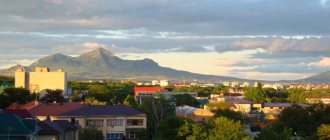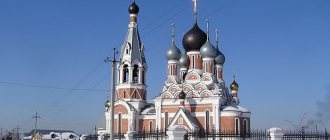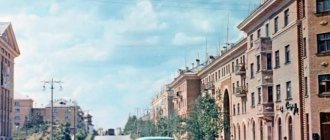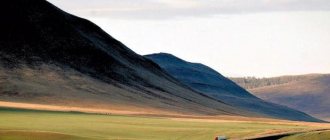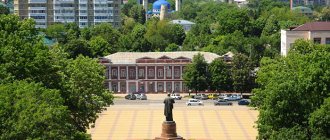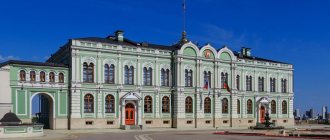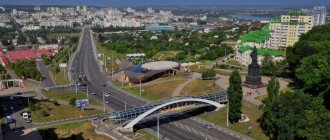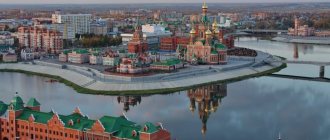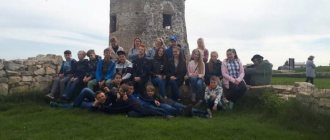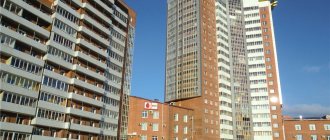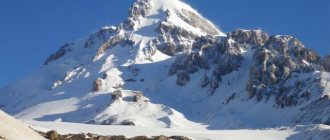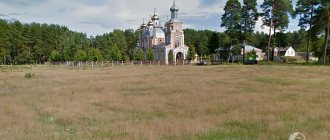Novocherkassk is located on a hill, surrounded by floodplains and the Aksai and Tuzlov rivers. Near the city there are the largest shopping and industrial centers - Rostov-on-Don, Shakhty, Aksai, Novoshakhtinsk, Bataysk.
The distance between cities is no more than 60 kilometers. There are 40 kilometers between Novocherkassk and Rostov-on-Don, and the distance to Bataysk is 53 kilometers. This location, where Novocherkassk is located, gives a certain advantage to the geographical position of the city.
Novocherkassk - City of Students
The city on a hill is surrounded by two tributaries of the Don River. Despite its short history, Novocherkassk managed to make a huge contribution to the history of the country. This is the industrial center of southern Russia, distinguished by high historical and cultural values.
The capital of the Don Cossacks is wide avenues, narrow streets, beautiful parks, rich gardens, luxurious mansions and Cossack houses, that’s where Novocherkassk is located. Novocherkassk is a city of students. Every fifth resident here is a university student. The city is proud of the largest university in Russia, SRSPU, where 23,000 people receive knowledge.
SURGPU
In addition, in the south of Russia there are 74 state educational institutions, 10 secondary educational institutions and three large universities, two of which have more than a century of history and have managed to train a large number of qualified industrial and agricultural specialists.
The Novocherkassk Polytechnic Institute was founded in 1840, and the Novocherkassk Zooveterinary Institute (now the Don Agricultural Institute) in 1841.
Map of Novocherkassk with streets
The historical center of the city is separated into a separate area, which is called “Center”. Its main city highways cross it crosswise:
- Baklanovsky Avenue;
- Herzen's Descent;
- Moscow street;
- Ermak Avenue.
They connect on Trinity Square, in the center of which there is a “Worship Cross”. In the city center there are several restaurants, banks, and hypermarkets. A map of Novocherkassk with diagrams will help you find the bus station and railway station.
A railway track runs through the city, which was built at the beginning of the last century. The railway connects Novocherkassk with Bataysk in the south and the city of Shakhty in the north of the Rostov region, and is also one of the main railway connections between the central part of the country and the North Caucasus.
Bataysk is located away from the M-4 Don federal highway. The Rostov Highway leads out to it from the city. Urban transport is represented by bus and tram services. Residents of the city face difficulties when moving from one area of the city to another, since they are located at a distance from each other. On a map of Novocherkassk with streets and houses you can see the distance between residential areas.
History of the city of Novocherkass
The city of Novocherkassk was founded in 1805. The founder of the capital of the Don Cossacks is Ataman Matvey Platov. Previously, the capital of the Cossacks was in Cherkassk, now it is the village of Starocherkasskaya. The transfer of the capital was extremely necessary and was based not so much on political reasons as on economic and even environmental reasons.
And yet, the main reason for moving the capital of the Cossacks is the frequent flooding by the waters of the Don. First, a protective earthen rampart was erected. But construction was expensive and unreliable, so it was stopped. Then frequent fires began in Cherkassk. Sometimes half the village burned out. And the lack of land roads prompted the Cossack capital to be moved to a new location.
Despite the fact that many were against this, Platov went with a request to the emperor and received permission to move Cherkassk to another place. In 1804, it was decided to move the capital. The festive move, where Novocherkassk is located now, took place only in 1806 and was accompanied by a cannon salute.
Ataman Matvey Platov
New Cherkassk greeted its first inhabitants with 101 cannon shots. And the main honorary residents were considered to be Ataman M.I. Platov with his army. Then the historical act of transferring all the traditions of the Don Cossacks took place: military, cultural, historical.
Train Station
The Novocherkassk railway station is a station in the Rostov region of the North Caucasus Railway, which has the status of an intermediate station. The station is located at st. Vokzalnaya, 1. Next to the railway station building there is a park. The station is open every day from 8:00 to 19:50.
Long-distance trains run through the Novocherkassk railway station in the following directions: Moscow, St. Petersburg, Kislovodsk, Rostov-on-Don, Arkhangelsk. Suburban trains are also serviced at the station.
Lead hail
At this moment, the protesters remembered their comrades who had been detained the day before. About 300 people moved to the police department. The workers tore out one of the doors in the department, used it to knock down the second, barricaded one, and entered the room where there were armed soldiers. Someone snatched a machine gun from a soldier, and his colleague opened fire out of fear. Panic began, some of those who broke into the building ran along the corridor and locked themselves in a cell, while others rushed into the street. A stray bullet hit a 15-year-old boy, who hung bloody on the fence. They put him in the cinema, someone shouted heart-rendingly: “The student was killed!”
What happened only spurred the crowd on. A murmur spread across the square. Stones were thrown at military personnel and police officers. By that time, motorized rifle armored personnel carriers had arrived at the city executive committee, but the soldiers were unable to push back those gathered.
Then they were replaced by special forces of the internal troops under the command of the head of the Novocherkassk garrison, Major General Oleshko . He once again asked those gathered to disperse; in response, cries of “Fascist!” were heard, and the crowd moved towards the line of military personnel. They started shooting over their heads (then, according to unconfirmed but persistent rumors, wounded and killed boys who had climbed there to look began to fall from the trees), the crowd fled, but a cry was heard: “They’re shooting with blanks!” People began to tear machine guns from the hands of the special forces. And then the soldiers opened fire on the crowd.
“Until recently, people did not believe that a deadly lead hail would fall on them in their hometown on a sunny summer day. Warning shots were fired upward. The crowd gasped in unison as dead children began to fall from the trees. Numerous witnesses recall that shooting was also carried out from the roofs, where the special squad that arrived with the Moscow authorities was holed up. Random people were injured, for example, a pregnant woman walking through the park, a hairdresser working in a building near the square, etc. 17 corpses were left lying in the square. They were literally immediately loaded into the back of a truck and taken away. Watering machines passed along the pavement. There are recollections of witnesses that the woman was on her knees and washed herself with water and blood, shouting: “Here is the blood of my husband!” There were many wounded, terrible wounds: in the back, in the knees. They were taken to hospitals,” says Bocharova.
The people are against Khrushchev. The true story of the Novocherkassk execution Read more
Employment
A large number of stable economic enterprises provide employment for a large number of residents. The Employment Center (Novocherkassk), which collects vacancies from all enterprises in the city, records one of the lowest unemployment rates in the region - only 0.5%. The main vacancies are associated with a shortage of blue-collar workers. But people with higher education, especially young professionals, do not always manage to find a suitable job. Women under 40 with higher education experience the greatest difficulties in finding a job.
Climate and ecology
Novocherkassk is located in a temperate continental climate zone, with mild, short winters and long, hot summers. The average annual temperature is about 9 degrees Celsius. Winter in the city begins in December and ends at the end of February. In January, the coldest month of the year, the thermometer can drop to minus 20-25 degrees, but on average it stays around -8. Summer in Novocherkassk begins in May and lasts until the end of September. In August, the thermometer can rise to 40 degrees Celsius, but the average summer temperature is +23. At the same time, in summer the population of Novocherkassk, Rostov region, experiences a rather acute lack of moisture, especially in August. It receives approximately 60 mm of precipitation throughout the year, with the wettest months being January, February and June.
While the climatic conditions of Novocherkassk are generally favorable for living, the environmental situation leaves much to be desired. The city is experiencing big problems due to water pollution in the rivers, and hence there is a shortage of drinking water. The region's industry significantly pollutes the city's soil and air. The Novocherkassk administration is working to solve these problems, but has not yet achieved much success in this direction.
I don't see the enemy
On the morning of June 2, a factory whistle sounded in the city, calling people to a demonstration. They walked to the City Council building with posters, red flags and portraits of Lenin . There were many women with children in the column, walking hand in hand with their husbands. They sang "Internationale". By 9 am, approximately 5 thousand people had gathered in front of the city committee. One of the demonstrators carried a dead cat with the inscription: “She lived under Lenin, withered under Stalin , died under Khrushchev.” Again there were shouts: “Call Budyonny and Voroshilov , these are our fellow countrymen, they will sort it out and help.” Meanwhile, in Novocherkassk in the evening there were already representatives of the party elite: Secretary of the CPSU Central Committee Kozlov (essentially Khrushchev’s deputy and, it is believed, the author of the decision to harshly disperse the protesters), Anastas Mikoyan and others. An armed detachment arrived with them on a special flight. The commander of the North Caucasus Military District, General Issa Pliev, ordered his first deputy, Hero of the Soviet Union Matvey Shaposhnikov, to move tanks towards the demonstrators. Shaposhnikov refused with the words: “I don’t see an enemy in front of me,” and thereby ruined his successful military career.
After standing at the closed doors of the city committee, the protesters began to filter into the building one after another. The soldiers standing in the cordon did not interfere with them. Once again, as the day before, a spontaneous rally began - the leaders of the workers addressed those gathered directly from the City Committee balcony. At this time, others were wandering around the offices. Someone pulled out half a bottle of vodka and a plate of sliced sausage from the nightstand and showed it to the crowd.
City infrastructure and quality of life
Small cities in Russia generally cannot compete with large, developed settlements, and Novocherkassk is not a happy exception. The city's population experiences a shortage of large cultural, healthcare, and trade facilities. But this problem is being successfully solved by nearby cities. But difficulties with buying housing and finding employment for young people lead to the fact that school and university graduates often leave the city. The infrastructure is poorly modernized, there are problems with roads. All this, of course, reduces the quality of life of people and their loyalty to the place.
Economy and industry of Novocherkassk
Industry is actively developing in the city. Here is the plant where most of the electric locomotives that run daily on Russian Railways came off the assembly line. The company employs more than 10 thousand people, but young, highly qualified specialists are always required.
On a detailed map of Novocherkassk you can also find where the state district power station on the Tuzlov River is located and the largest giant plant in the country that produces electrodes.
Novocherkassk factories also produce;
- Petrochemical equipment;
- Glass containers;
- Clothes;
- Bread;
- Meat;
- Beer;
- Wine and vodka products;
- Milk;
Despite the huge number of jobs, many young people prefer to go to work in the metropolis, especially since it is only half an hour away by car.
Ataman Palace
On the map Photos
A two-story building in the classicist style. The Ataman Palace served as the residence of the military ataman, as well as the residence of the royal family who visited the city. These were Alexander II, Alexander III and Nicholas II. Design and construction were carried out by Academician I.O. Valprede in 1863. The rich decoration of the interior makes an indelible impression: state rooms with high vaulted ceilings, stucco moldings and paintings, huge marble fireplaces and carved furniture. Everything here points to the former presence of royalty. The courtyard adjacent to the back of the building in those days was decorated with flower beds and ornate paths, as well as a carved gazebo installed on a raised platform.
St. Michael the Archangel Church
On the map Photos
A stone church designed by local architect Yakov Sedov was built on the main Platovsky Avenue on the territory of the Azov Bazaar in 1870 and consecrated in 1872. Archbishop Platon of Don and Novocherkassk participated in the consecration. It was a two-tiered brick church with chapels: on the top floor, the right chapel in honor of the Vladimir Icon of the Mother of God and the left in honor of the Cathedral of John the Baptist. On the lower floor the main altar is Panteleimon's, with a chapel on the right side in the name of St. Father Simeon the Holy Fool and John the Faster. In 1906, on the initiative and at the expense of the church elder P.P. Derepatskov. repairs were made, and the temple's paintings were updated. At the same time, church and parish guardianship was organized. The further fate of the Archangel Michael Church is similar to the fate of other outlying city parish churches. Most likely, it was closed just like the others, in 1935. According to some reports, it started working again in 1943. According to some stories, the temple was allegedly closed again in 1960, during another mass atheist campaign. A new stage in the revival of the Archangel Michael Church began in the early 90s.
Population dynamics
They began to count the population of Novocherkassk from its very foundation. In 1811, 6.7 thousand people lived here. In the first decades of the settlement's existence, the population growth was slow; noticeable growth began in the second half of the 19th century. So, in 1863, 18 thousand people lived here, and by the end of the century there were already 50 thousand. Before the revolution, there were about 70 thousand people in the city, and after it it decreased to 42. In Soviet times, the population dynamics was positive. By 1989, 188 thousand people lived in the city. But perestroika led to the beginning of a long period of decline in the number of residents. In some years the dynamics were positive, but the overall trend was negative. Today there are 170 thousand people in the city, and the forecasts are still disappointing.
Museum of the History of the Don Cossacks
History On the map Photos
The Museum of the History of the Don Cossacks has a unique scientific library, which contains publications from the times of Peter the Great to the present day. There are many authentic things, manuscripts and books of scientists, literature and artists of the Don. Along with collections of archaeological objects, combat bladed weapons and firearms, coins and paper money, banners and standards, military uniforms and civilian clothing, including “Nekrasovites” who returned after many decades from Turkey to the Don, household items and furnishings mansions, the museum has large art collections of the St. Michael the Archangel Church funds not only of Don artists N.N. Dubovsky, I.I. Krylova, M.B. Grekova and others, but also paintings of Western European painting, collections of domestic and foreign crystal and porcelain (for example, Saxon, English, etc.). More details
St. George's Church
On the map Photos
St. George's Church was built on Kolodeznaya Square in Novocherkassk in 1898 in memory of the miraculous rescue of Sovereign Emperor Alexander III and His august family during the crash of the royal train on October 17, 1888. Arch. V.N. Kulikov drew up a project, taking the church in the village of Nizhne-Chirskaya as a model. The church was built in the Russian style on a sloping site towards the Tuzlov River. Instead of a bell tower, an original belfry was built above the refectory. The capacity of the temple is 400 people. The temple was built with private donations and cost 17 thousand rubles. The largest contribution was made by the widow of the cornet F.V. Kashcheev. The iconostasis was made in the workshop of A. Solovyov, window frames and crosses from shaped iron - in the workshop of T.H. Fasler. The consecration of the temple took place on October 18, 1898. In 1939, the temple was closed. In the post-war years it was used as a granary. At the end of the 1940s. the temple was returned to the Church and became operational again. Its restoration began in 1990. The temple preserves the shrines that have been there since its construction: icons of St. blg. book Alexander Nevsky in a silver frame, St. Panteleimon the Healer of the Athonite script. Of particular interest is the miniature wall iconostasis with paintings from the academic school. The original work is the cast iron bas-relief “The Last Supper”, a copy of the famous fresco by Leonardo da Vinci. In October 2000, St. George's Church acquired a new shrine - the icon “It is Worthy to Eat”, a copy of the myrrh-streaming icon from St. Mount Athos.
Central Library named after. A.S. Pushkin (former Officers' Assembly)
On the map Photos
The library moved to the building of the former Officers' Assembly with the advent of Soviet power in 1920. Built for the Don Cossack Army in 1890, it was truly unique. The building of the former officers' meeting is one of the most significant buildings in Novocherkassk at the end of the 19th century. It acquired its final appearance as a result of the reconstruction of the house and the appearance of an extension on a plot purchased nearby at the intersection of Moskovskaya and Komitetskaya streets. The building was built in a style typical of the architecture of the 17th-19th centuries. classicism style, which is characterized by strict forms of facades and decorative stucco and iron decorations, rounded windows. The main hall was intended for celebrations and meetings.
mound of Glory
On the map Photos
The memorial complex “Mound of Glory” is located in Alexander Park and is dedicated to the townspeople who died in the Great Patriotic War. In the battles for the liberation of Novocherkassk in 1943, 900 people died. Before the revolution, on the site of the “Mound of Glory” there was a simple observation deck. With the advent of Soviet power in Novocherkassk, the Alexander Garden was renamed the “City Park of Culture and Recreation,” and in 1980, on the 35th anniversary of the celebration of Victory in the Great Patriotic War, this memorial complex was built on the site of an ancient mound and observation deck. At the foot of the “Mound of Glory” there is an alley of hero cities of the Great Patriotic War, as well as two memorial stones: to soldiers of world and local wars, and to victims of the Chernobyl nuclear power plant disaster.
Triumphal arches
History Photos Northern Arch on the map Western Arch on the map
The triumphal gates at the northeastern and southwestern entrances to Novocherkassk preserve the memory of the heroic participation of the Don Cossacks in the Patriotic War and foreign campaigns of 1812-1814. More details
Alexander Nevsky Church
On the map Photos
The church, designed by the architect Lavopierre, was built wooden, and therefore temporary, so its construction took little time. On June 29, 1810, Archpriest Alexey Oridovsky consecrated the newly built church. There was only one throne in the Alexander Nevsky Church, in honor of the holy noble prince Alexander Nevsky. In 1822, one of the residents of Novocherkassk, “who loves the splendor of the house of the Lord,” added a chapel to the church in the name of St. Great Martyr Paraskeva Pyatnitsa, consecrated on October 26 of the same year by Archpriest Jacob Merkhalev. December 22, 1896 The last liturgy was celebrated in the old wooden Alexander Nevsky Church, during which priest Vasily Petrov made a heartfelt speech about love for his temple, which for 86 years was the center of the spiritual life of many people. In 1898, the low, gloomy, cold and dark old church was dismantled and transported to the Mishkin village of the Novocherkassk village, where a new church was built from this material, consecrated on November 12, 1900. The new Alexander Nevsky Church, built behind the Alexander Garden (now the city park), was built, like the Ascension Cathedral, in the New Byzantine style, one-story, with a semicircle in the altar, behind which there is a room for the sacristy. The temple can accommodate up to 1,500 people for one service. The main dome inside is decorated with a picturesque image of the God of Hosts, and the semi-domes and walls of the temple are decorated with images of events from sacred history and the faces of saints, as well as sacred sayings. An iron staircase leads to the bell tower. The outside of the church was whitewashed, and plaster was placed only around the windows and doors. The inside of the temple was completely plastered, painted with oil paint and decorated with paintings.
